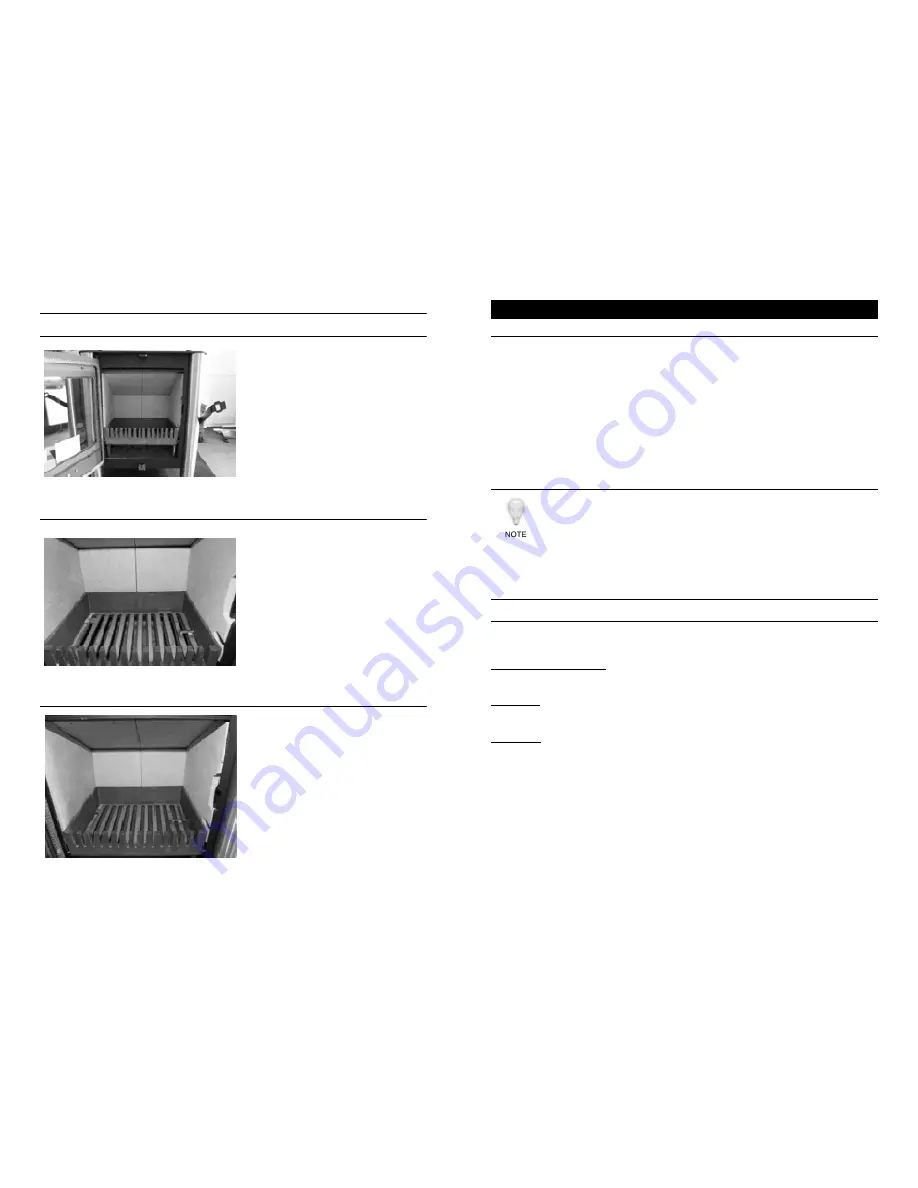
LIGHTING & CONTROLLING THE FIRE
Before lighting the fire for the first time ensure that the grate is closed and the baffle, side and
back bricks are in position. Burning without these will result in the stove overheating and being damaged.
Open the air wash control and the primary air control fully. Place some tightly rolled paper on top of
some crumpled paper on the base towards the back of the stove. On top of this, place some small
pieces of wood. Light the crumpled paper and close the door. Once the fire becomes established add
some larger pieces of wood. As the stove comes up to temperature close the spinner. The burning
rate of the stove can now be regulated by the rate at which fuel is added and by adjusting the air
wash control.
With the above in mind it is plain to see that the stove should ideally be run with the primary air inlet
closed and the air wash control open whenever possible. Another advantage of running the stove with
the air wash open is that the air being drawn into the stove travels across the glass forming an air
barrier between the glass and the fire bed helping to prevent smoke particles sticking to the glass. If
the fire dies down too low, opening the primary air control for a short period will revive it.
CORRECT RUNNING TEMPERATURES
To get the best results from your stove it is recommended that a wood stove thermometer (available
from your stove dealer) be fitted to the flue pipe above the stove, at eye level if possible. The figures
below show the recommended temperature of the flue gases.
115
°
C - 245
°
C (240
°
F - 475
°
F)
The flue gases should be in this temperature band for the safest, most efficient and most economical
operation of the stove.
Below 115
°
C
This is below the condensation point of wood gases and may cause the build up of tar in the chimney,
dirty the stove glass and result in the inefficient burning of fuel.
Above 245
°
C
Too hot. Heat will be wasted up the chimney. Excess heat may damage the stove or ignite an existing
accumulation of tar resulting in a chimney fire.
9
WOOD BURNING
Wood burns most efficiently when the air for combustion is supplied from above the fire
bed rather than below. The air supplied above the fire bed provides the oxygen necessary for
the volatile gases (smoke), given off by the wood as it heats, to combust. This ensures
that the gases are burnt and used to heat the stove instead of being wasted up the chimney
or condensing and forming tarry deposits inside the stove, in the flue or on the stove
glass. Running the stove with the primary air control open and the air wash control
closed will provide oxygen for the wood to burn on the fire bed but will not provide air for
the volatile gases above the fire bed to combust resulting in a smoky inefficient fire.
8
MULTI-FUEL GRATE
Fig. 4 - Grate
Fig. 5 - Grate set up to burn solid fuel with grate slider in the open position
Fig. 6 - Grate set up to burn wood, with grate slider in the closed position.
























